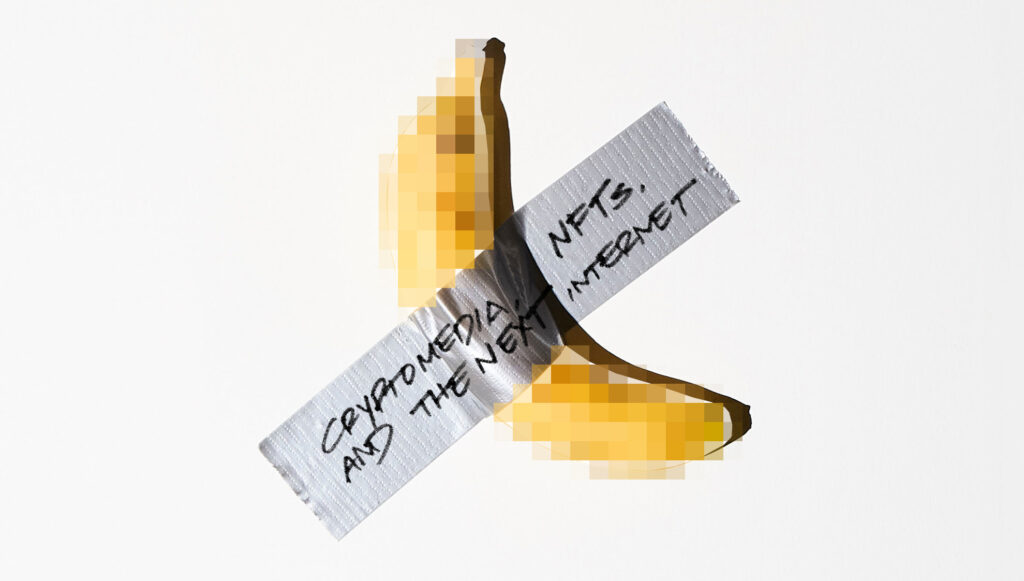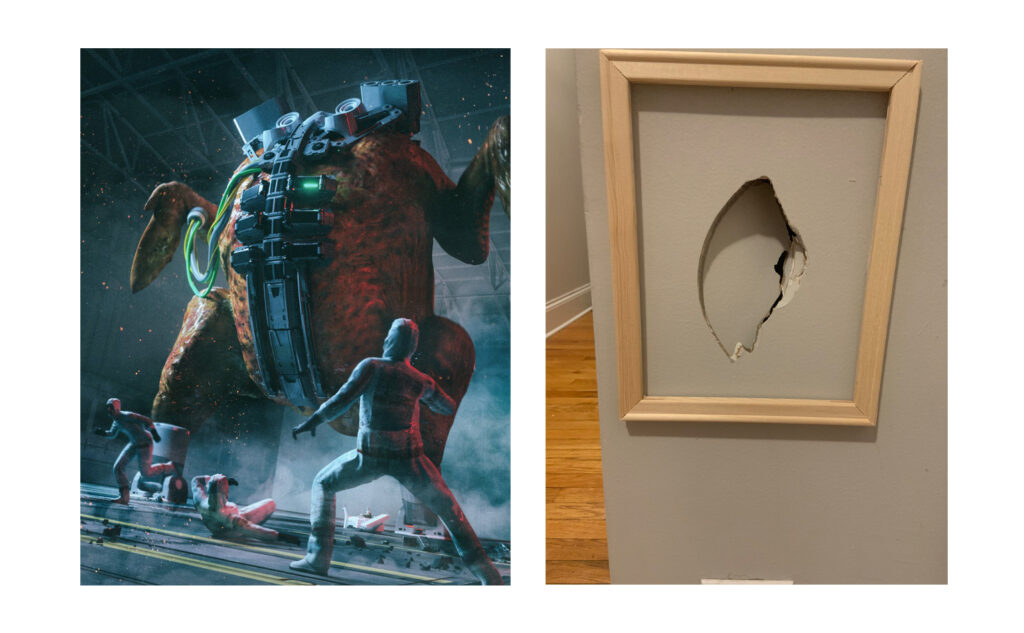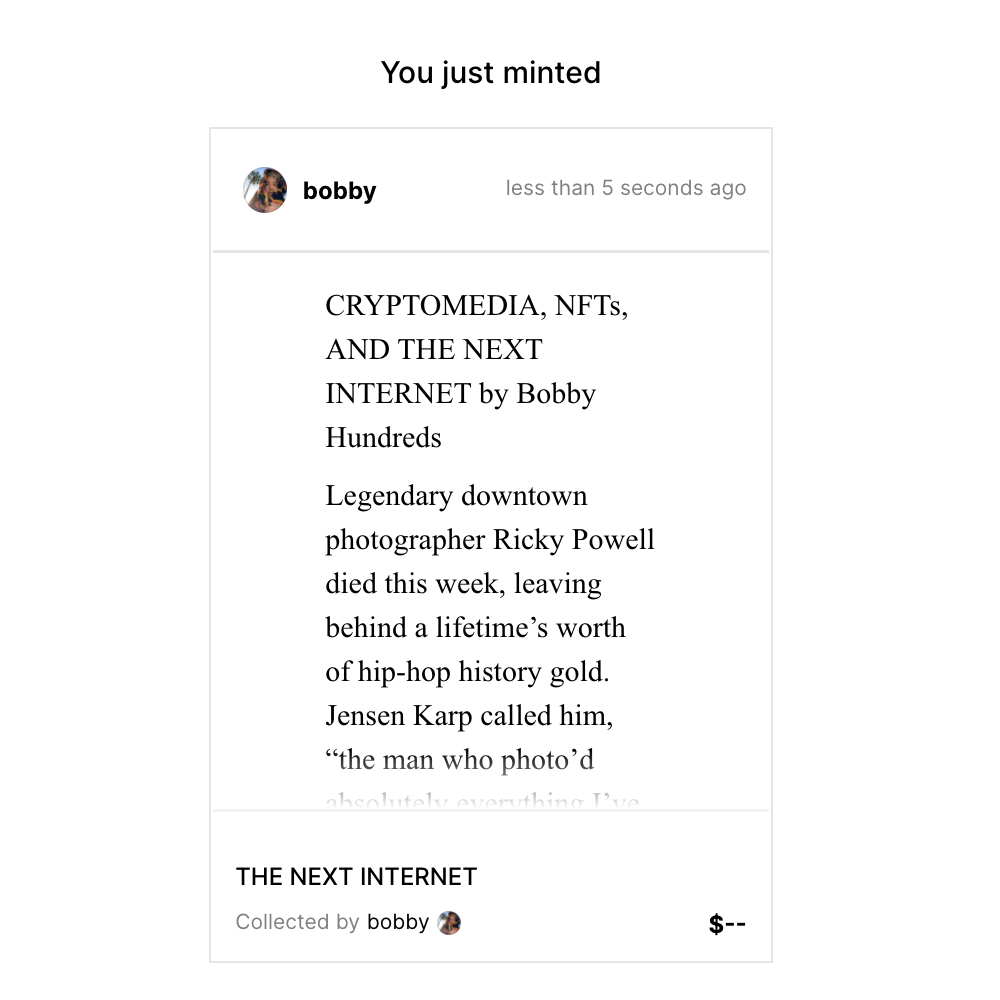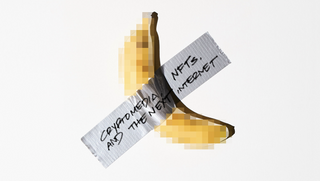
Legendary downtown photographer Ricky Powell died this week, leaving behind a lifetime’s worth of hip-hop history gold. Jensen Karp called him, “the man who photo’d absolutely everything I’ve ever thought was cool,” much of that attributed to frozen moments in time with rappers like LL Cool J, Beastie Boys, and RUN DMC. Along with Glen E. Friedman, Estevan Oriol, Craig Stecyk, and Chi Modu, my own foray into photography in the ‘90s was inspired by cultural documentarians like Ricky Powell.
In fact, there was a season where photography led my career aspirations. I grew up shooting film at concerts and skate sessions, but I most enjoyed taking people’s portraits. In the early 2000s, DSLRs and editing programs lowered the barrier-of-entry to the practice. Smartphone cameras empowered laymen to be savvy photographers. It became harder to distinguish whether someone was a serious shutterbug or hobbyist. Then, the Internet democratized content and social media became a media free-for-all (Or a freefall, depending on how you look at it).
Years ago, I shopped my photography portfolio to some select art galleries only to discover that many of them had a policy of not curating photo shows. I then toyed with the idea of producing a photo book but was promptly told by mainstream publishers that photo books are a tough sell.
“Well, what do I do with all these photos I’ve been shooting since I was 12 years old? Live photos from punk shows and ‘90s skaters and world travels?”
“Put them where everyone else puts them: Instagram.”
I love the medium of photography. Some of my pictures mean more to me than the clothing I design and sell. Yet, the marketplace tells me that unlike a physical product, photos aren’t worth as much because they’re easily replicable, drag-and-droppable, and digitally disposable. And it’s not just photography. GIFs and JPEGs, memes, captions, MP4s. Whichever the file extension, we’ve grown accustomed to offering our creative output for free. We’ve been trained to believe that nobody owns anything on the Internet. Online media is to be liberally sourced and shared with all. And there is no monetary value in a tweet or a TikTok.
But, that’s not true. Your social media posts do make money. It’s just that you don’t see any of it. Your gorgeous photographs, compelling essays, and motion graphics draw attention to platforms like Facebook and Google, which churn advertising dollars off of all those eyeballs. You do all the hard work. They make the money from it. And now that you see it that way, isn’t it incredibly unfair?
I have good news. Over the past few years, but really in the last 12 months, there’s been a revolution welling up to reclaim value and ownership in digital art. There is finally a way to restore much of the meaning and value that have been lost with – what is now coined as – cryptomedia. And that’s through blockchain technology and Non-Fungible Tokens. Or NFTs.
What is an NFT?
Do you remember the Art Basel banana? In late 2019, a duct-taped banana sold at the Miami art fair for $120,000. But, of course, bananas rot, so why would anyone pay that much for a perishable installation? What the patron was actually buying wasn’t the physical banana itself, but the certificate tied to the fruit. The artist Maurizio Cattelan clarified that the mushy, decomposing banana can always be swapped out. But, there’s only one certificate, and that’s where the value existed.
NFTs are those certificates recorded on Ethereum blockchain. *Heads up, I’m not gonna attempt to explain bitcoin or how blockchain technology works (You can dive deep into a Reddit or Wiki for that). For all intents of this essay, all you need to know is that if the banana is a metaphor for your cryptoart (a photo you shot, a song you recorded, a meme you passed around), you can now mark it – or mint it – as an NFT. It’s now listed in the blockchain and universally recognized by the world that you are the rightful owner of the work. Which, means that you can sell it. It also means you can buy other people’s NFTs.
Where does this all go down? Decentralized marketplaces like Nifty Gateway, Rarible, Superrare, and Zora. How much money are we talking here? Cryptomedia made headlines in December when Instagram artist Beeple sold 20 of his pieces for $3.5 Million. The more sensational story, however, is the thousands of everyday artists who are striking overnight success and notoriety in this digital gold rush. Estimates are that over $8 Million of cryptoart changed hands over the month of December.
On Christmas Day, Sean Williams, a former Cartoon Network intern, accidentally kicked a hole in his wall. As an experiment, he placed a frame around the gash, snapped a photo of it, and minted it on the Superrare platform. One week later, on New Year’s, Sean accepted an offer of 7 ETH for his cryptoart, entitled “Idiot.” 7 ETH, as of this writing, converts to roughly $11,000.

Who is buying this stuff?
I love this question, because it’s one that I’ve been personally hearing my entire career:
“Why would anyone spend $300 on some basketball sneakers?”
“$500 for denim with holes in it? What’s wrong with some $50 Levis?”
“Who is paying thousands of dollars for a T-shirt? Just because there’s a red box on it?”
There’s a lot of money floating around out there, especially these days with stimulus checks and stonk surges. And there’s a market for everything. We can compare an $11,000 Amir Fallah painting to $11,000 “What the Dunks” or a fancy $11,000 Napa dinner with Screaming Eagle wine. It’s relative. One or none of these items may mean as much to you as Sean’s photo, but there are consumers out there who will readily justify each expense down to the penny.
Granted, gambling speculators are stirring much of the frenzied activity around cryptoart right now. These are the same types of people who bet big when bitcoin first broke or squatted on domain names or hedged their investments on real estate in the 2000s. They believe that cryptoart may very well be the next big thing for the Internet. And, although $11,000 is a lot of money for a digital photograph of a hole, it pales compared to the upside of millions if this is the next Banksy, or billions if it’s the next Mona Lisa.
I still don’t get it. Why would you want to own a digital piece of media if it can be downloaded onto anyone else’s computer? Wouldn’t you prefer a physical possession (e.g. a 1-of-1 oil painting) instead, to ensure that – and brag to your friends – that it’s the original?
Speaking of Christmas, at the crack of dawn, my boys tore through their meticulously wrapped presents under the tree. Santa gifted them board games, action figures, books, and remote-controlled robots. However, to our dismay, they spent about 35 minutes playing with their new toys before diving back into Fortnite. For many children today, their realities and social scenes exist within the digital framework of video games. What does it matter if you have a Baby Yoda doll or new Jordans if you can’t flex them to your peers in the gaming universe? It’s more important to stack digital assets inside the games instead, like back-bling or spray. I could literally hand my kids a $100 bill and they wouldn’t know what to do with it. Instead, they’d ask, “Daddy, can you convert that to Fortnite V-bucks?”
As bizarre and disheartening as this sounds for the kids, you’re no different. You spend more time digitally interacting with your friends than seeing them in person. You’d rather curate your page instead of decorating your home. You can hang a painting in your living room for your 25 guests a year. Or, you can take a photo of the painting and post it to your social media where thousands of followers will appreciate it.
You can even rotate cryptoart through a digital picture frame: A sunset photograph, Trump’s “covfefe” tweet, a Beeple IG video, an NBA Top Shot digital basketball card. Although each slide is a Google Images click away, you can take pride that you own the unique certificate to each of these masterpieces. And that somebody, somewhere, is willing to buy it from you.
So, why are you so excited about this?
I’m still figuring this out. Cryptoart and NFTs are so new that history is being made every hour of every day. Most of the insightful editorial, podcasts, and YouTube thinkpieces on the subject matter have been recorded in the last month or so. Last night, a new marketplace called Foundation sprouted up. And this next week, The Hundreds will be the first clothing brand to mint NFTs against our Spring season’s collection of T-shirt graphics.
I think what inspires me the most is that creators will finally be able to make the money they deserve from their hard work. Facebook is a half-a-trillion-dollar company while many young artists are struggling to make rent. Although the financial rewards aren’t the only things that matter in making art, money and compensation help to provide a safe and secure environment to create. And it cuts the lie that your art doesn’t hold value or that nobody cares to pay for your work. They do. The market is there. Its just that instead of paying you, the clientele’s been paying the social media companies with their time and attention.
Every ten years or so, there’s a paradigm shift with the Internet. First, it was the transition from portal sites to Google. In the 2010s, social networks not only flipped how we interacted with each other, but how we consumed content. Could cryptomedia and NFTs indicate the next wave of how we consider and use the Internet? One where everyone, not just artists, stand to benefit as far as property ownership and profitability are concerned?
That shit is bananas.
A special Thank You to Trevor McFedries, Dee Goens, Sean Williams and Charlie Rosenthal for teaching me the wonders of NFT. And yes, I did mint this essay on Zora.


